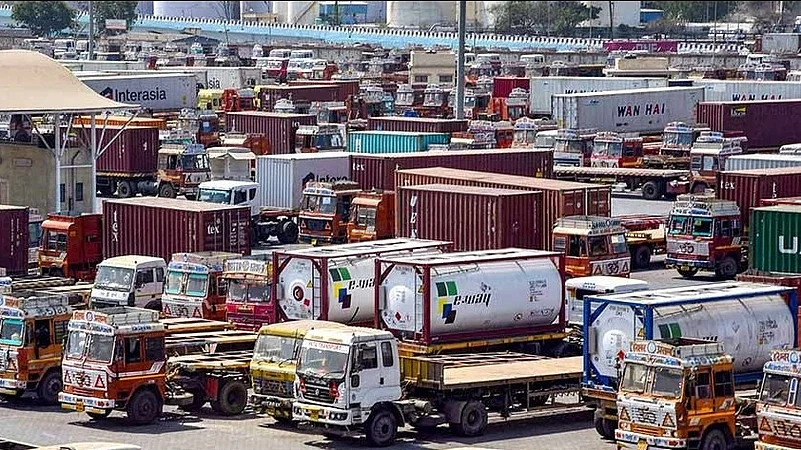Sectors like e-commerce, FMCG, cement, perishable freight and dairy have the potential to adopt electric trucks and contribute to the decarbonization of medium and heavy duty trucks (MHDT), according to a report released at the EV100 India Conclave in Delhi on Thursday.
“Use cases in dairy, cement bulker movement, slag transport, and port operations show existing patterns and requirements that are suited for e-MHDT deployment,” said the report titled India’s Early Medium and Heavy-Duty Truck Electrification Initiatives Report.
These use cases may continue to grow and hence, present an opportunity for increased e-MHDT penetration to achieve national electrification targets, the report said.
Parcel/(FMCGs) load has the largest on-road truck fleet share (45 per cent), followed by perishable goods (18 per cent) and milk/edible oil tankers (9 per cent), said the report.
It said the sale of electric MHDT was limited by high dependence on imports of powertrain and battery pack components. Despite these limitations, ZETs are anticipated to grow from 221 units in 2024 to about 0.27 million units in 2050, accounting for 35 per cent of annual registrations in 2050, said the report.
In India, medium and heavy-duty trucks (MHDTs) comprise 2% of the total vehicle population but contribute to 45% of the overall vehicular road transport emissions, according to Climate Group, an international non-profit working for achieving net zero carbon emissions.
The report was based on 6 use cases where electric trucks were being used by companies such as including JSW Cement, Billion E-Mobility and Kalyani Powertrain (a wholly owned subsidiary of Bharat Forge).
According to the report, JSW Cement has been using electric trucks since November 2023 in Andhra Pradesh and Karnataka. “These trucks transport clinker on the onward trip and slag on the return trip between two JSW Cement plants in South India – Nandyal in Andhra Pradesh and Vijayanagara in Karnataka,” the report said.
On the other hand, Kalyani Powertrain is converting ICEs to EVs for business. It aims to electrify 5- to 8-year old MHDTs in the tonnage segments of 7.4–14. There are 1.5–2 million trucks and buses that fit this criteria, according to the report.
It also highlighted the challenges in adopting electric trucks due to high upfront cost, comparatively high financing cost, limited charging infrastructure and restricted asset utilisation.
“Insurers consider electric variants of battery-operated trucks to be in the early stages of their development. There is very limited operational data to accurately assess the average performance and risks associated with e-trucks. From an insurer’s perspective, e-trucks are more expensive than diesel or CNG trucks, leading to higher insured declared values (IDVs),” the report added.
At the ground level, drivers of electric trucks complaints about lack of charging infrastructure for trucks. “They have restricted access to truck-specific charging infrastructure at hotels and restaurants along highways,” the report highlighted.
Additionally, infrastructure owners prevented trucks from using the charging points, allowing only cars, two-wheelers (2Ws), and three-wheelers (3Ws) to use them.
The report sought support from all the stakeholders involved in the ecosystem and made recommendations for governments, OEMs, academia and financial institutions.
It called for the OEMs to invest in innovation focused on electric trucks, de-risk the vehicles and develop advanced battery technology.
It said the government should provide financial incentives to the buyers of electric trucks in terms of subsidy on vehicle purchase, toll exemption etc while financial institutions can provide concessional debts and viability gap funding.





























